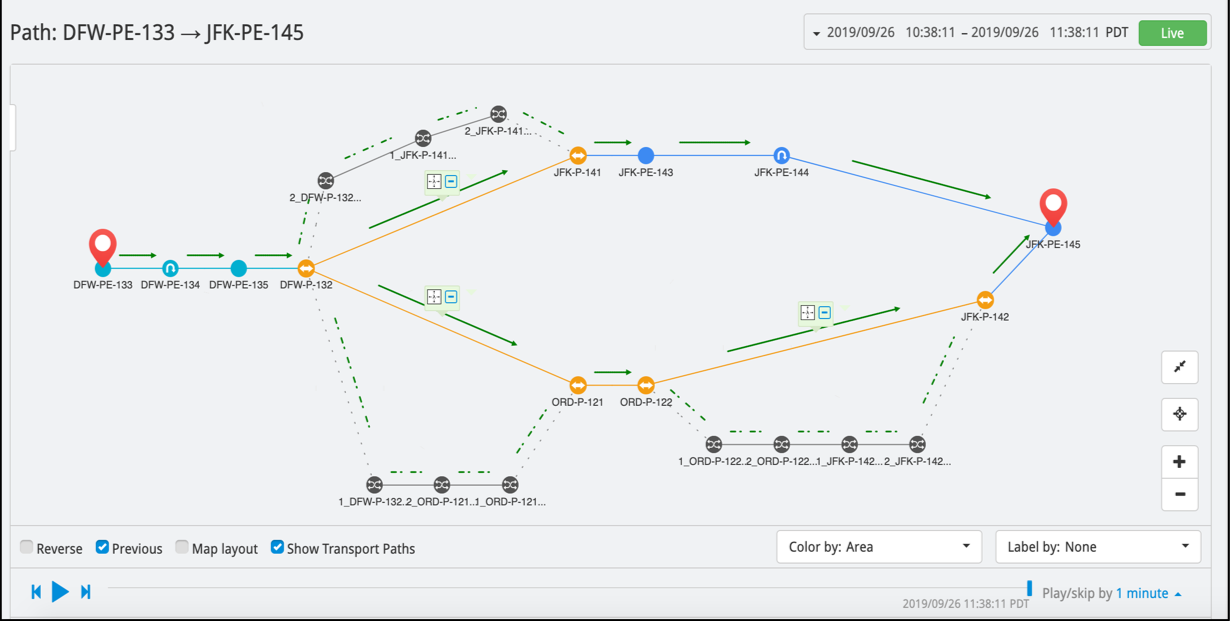Multi-Layer Networking: Unifying IP and optical network management
It’s no secret that networks are growing. The introduction of 5G mobility, cloud-based services, and new virtual edge applications are driving exponential growth in demand for network connectivity. By introducing new technologies, network operators have a tremendous opportunity to grow their business revenues and reduce costs. Standing in their way are the challenges of a highly competitive market, customers who are not willing to wait months for delivery of new services, and the expectation of tight SLAs. These market realities can lead to customer churn, failed service introductions, and revenue loss.
One of the major obstacles holding network operators back is the complexity of the multi-layer network that they own and operate. These networks are comprised of a plethora of independent services and technologies. Each layer is managed by independent teams using different tools with little or no coordination between the teams. The result is multi-layer service activation and assurance processes that are time consuming and susceptible to failure.
The Multi-Layer Network Dilemma
The IP/MPLS and optical layers in a multi-layer network are typically managed by independent network operations (NOC) teams working in silos. The lack of cross-layer expertise by these NOC teams and the lack of unified visibility and analytics into these layers negatively impacts network planning, network optimization, service activation, and the troubleshooting of complex issues that involve multi-layer inter-dependencies.
For example, during new service provisioning, network architects and planners analyze the constraints and performance requirements for a new service independently at each layer, perform manual path computations, and rely on manual hand-offs. This results in multiple iterations, a lengthy planning process, and consequently a longer time-to-market for new service activation. Furthermore, a newly provisioned service, despite best intentions, may not be truly diverse or may violate data sovereignty constraints at the optical layer. Finally, the absence of coordinated planning may result in performance, protection, and cost characteristics being applied redundantly at each layer, leading to the creation of a complex and over-engineered network.
The lack of unified visibility and analytics into the IP overlay and optical underlay also inhibits NOC teams from quickly finding a root-cause, thereby increasing the time taken to identify and resolve service delivery issues and resulting in SLA violations.
Multi-Layer Topology Insight Solution:
Building and running highly performing multi-layer networks requires visibility into routing paths, traffic flows, and network performance at the IP layer along with correlation to the optical underlay path and performance. In large and complex multi-layer networks, this data is useful only if network operator can quickly determine how a performance issue at one layer affects data delivery in another layer.
Operators need a single pane-of-glass monitoring solution that provides easily accessible and correlated cross-layer visibility and analysis, providing actionable data to take informed decisions in all of their major processes: plan-to-build (P2B), order-to-service (O2S) and trouble-to-resolve (T2R).
This is where Blue Planet Multi-Layer Topology Insight (MTI) helps. The MTI solution collects and processes routing paths, traffic flows, and performance metrics from the IP layer, and correlates it with underlying optical paths to provide actionable intelligence for network engineers, planners, architects and NOC teams.
Unified visualization and analysis for IP/MPLS and optical networks
With unified visibility and analytics provided by MTI, IP and optical NOC teams can understand the underlying optical links supporting IP/MPLS paths and quickly understand which IP services are affected during a fiber cut. They gain immediate understanding of alternate services paths or path protection options to accelerate service activation and assurance. Multi-layer visibility helps to assure truly diverse TE-tunnel paths based on transport network SRLG or data sovereignty. Correlation of routing and performance measurements from different layers help engineers understand how a fiber cut is causing traffic to be rerouted over longer, higher-latency IP paths, resulting in application performance issues.
If you are running a multi-layer network and require a solution to tame the multi-layer beast that constrains your opportunity to grow your business, Blue Planet Multi-Layer Topology Insight is the solution you need.
To learn more about MTI and see a demo of how it can help you and your network, Request a Personalized Demo.


